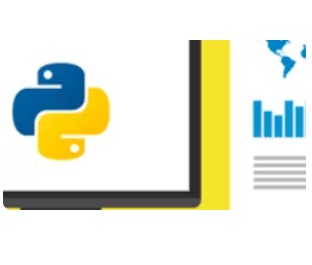| IBM's Visualizing Data with Python Course |
| Written by Nikos Vaggalis | |||
| Monday, 09 October 2023 | |||
|
This is a free and self-paced course by the IBM Developer Skills Network Team that demonstrates the principles of Data Visualization, with Python of course. On Coursera, it forms part of two IBM Professional Certificates. A picture is worth a thousand words - data visualizations let you derive insights from data and communicate it to others.
Data Visualization With Python teaches you to work with many data visualization tools and techniques and create various types of basic and advanced graphs and charts like: Waffle Charts, Area Plots, Histograms, Bar Charts, Pie Charts, Scatter Plots, Word Clouds, Choropleth Maps, and many more! You will also create interactive dashboards that allow even those without any Data Science experience to better understand data, and make more effective and informed decisions. It does this mainly by utilizing Matplotlib and with good reason. While there's many software libraries that visualize data, the main advantages of Matplotlib is that it gives you complete control over the properties of your plot as you can customize all the properties of your charts. The course also introduces four other libraries, Seaborn, Folium, Plotly and Dash. With those tools under your belt you will learn how to create interesting graphics and charts and customize them to make them more effective and more pleasing to your audience. That includes line plots, area plots, histograms, bar charts, box plots, pie charts, maps and dashboards The course requires around 19 hours of efort and is spread over five modules. All lessons are accompanied with hands-on labs in Jupyter notebooks where you write the Python code. In the first module, data visualization and some of the best practices are briefly introduced along with learning about Matplotlib's history and architecture. The dataset used through the course is also presented which is about immigration from different countries to Canada from 1980 to 2013.The data itself is stored in pandas dataframes so, before we get to building visualizations and plots, a brief crash course on pandas is provided to learn how to read data from csv files into dataframes. In the second module, we learn the basic data visualizations such as area plots, histograms, and bar charts, as well as the more specialized ones like pie charts, box plots, scatter plots, and bubble plots. In Module 3, we learn about the more advanced visuals of waffle charts and revisit them by using Seaborn to observe how this library simplifies the process of creating plots and visuals. The course goes on to explore the other library, Folium, used in visualizing geospatial data. We learn how create maps of different regions of the world, superimpose markers of different shapes on top of maps, and learn how to create choropleth maps, a type of statistical thematic map that uses color corresponding to geographic characteristics such as population density or per-capita income. Module 4 looks at dashboards. Interactive data applications are crucial tools for data visualization and analysis because they provide a consolidated view of key data and metrics in a visually appealing and understandable format. We learn about Plotly and discover how to use Plotly graph objects and Plotly express to create charts. We then gain insight into Dash, an open-source user interface Python library, and its two components. The final module comprises final peer-reviewed project and exam. For the assignment students analyze historical automobile sales data covering periods of recession and non-recession bringing the analysis to life using visualization techniques and then displayings the plots and graphs on dashboards. To wrap up the course there's a timed quiz. While you can audit this course for free you won't be able to participate in the peer review or do the exam without upgrading. The course is part of IBM Data Science Professional Certificate and IBM Data Analyst Professional Certificate. Both of these consist of 10 courses and are eligible for college credit at participating U.S. colleges and universities. For a less demanding option it is part of the Applied Data Science Specialization which can be counted towards the online Master of Data Science at Illinois Tech. All in all, this is a great course because of two reasons. The first one is learning about the concepts of visualization and when to use each type of chart for the case at hand, and the second is that you learn to do that using Python, the defacto tool in data science.
More InformationData Visualization With Python IBM Data Science Professional Certificate IBM Data Analyst Professional Certificate Applied Data Science Specialization Related ArticlesTake Harvard's CS50 Introduction to Artificial Intelligence with Python For Free A Crash Course on Python By Google IBM Professional Certificates On Coursera
To be informed about new articles on I Programmer, sign up for our weekly newsletter, subscribe to the RSS feed and follow us on Twitter, Facebook or Linkedin.
Comments
or email your comment to: comments@i-programmer.info |
|||
| Last Updated ( Monday, 09 October 2023 ) |
 Disclosure: When you make a purchase having followed a link from this article, we may earn an affiliate commission.
Disclosure: When you make a purchase having followed a link from this article, we may earn an affiliate commission.

